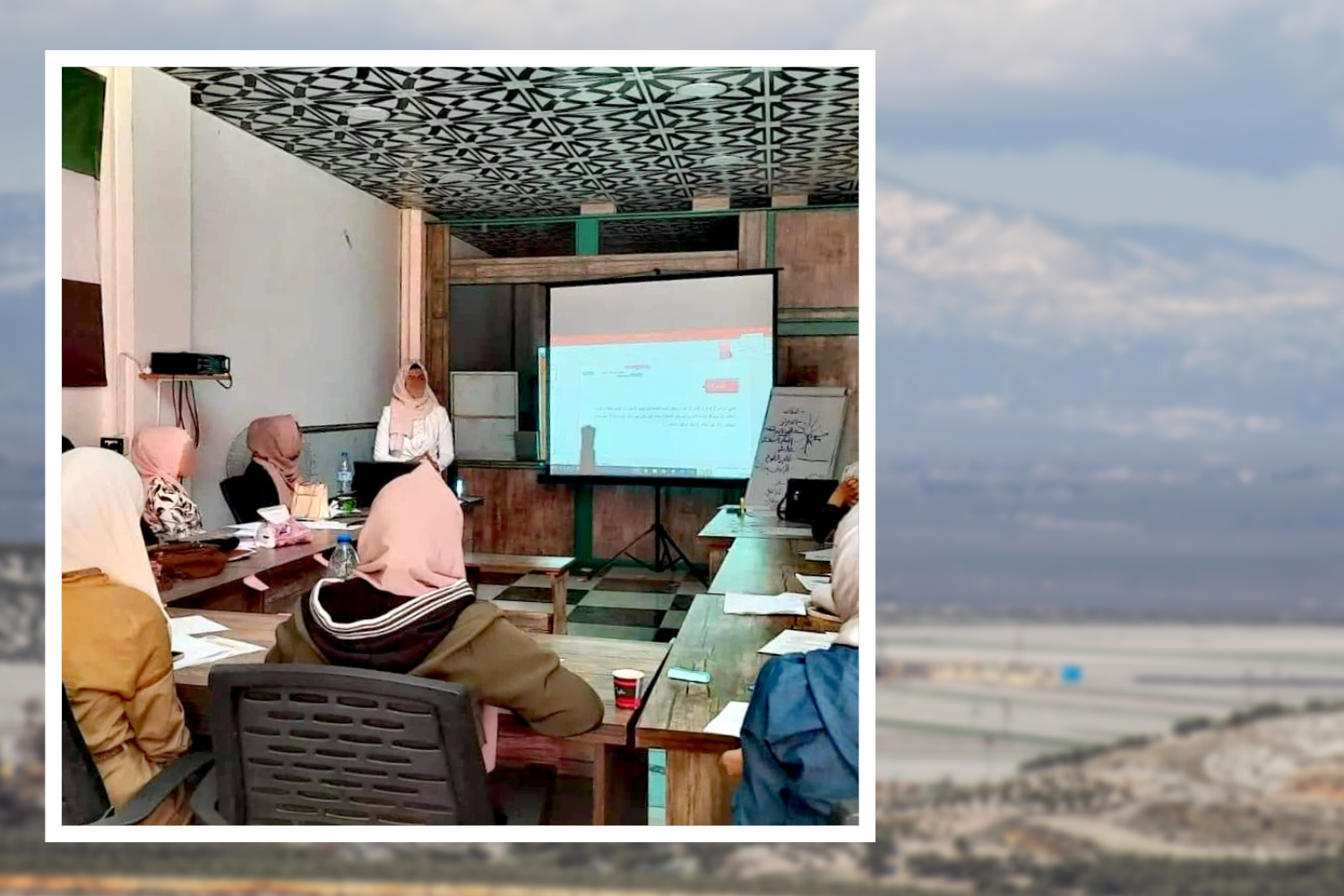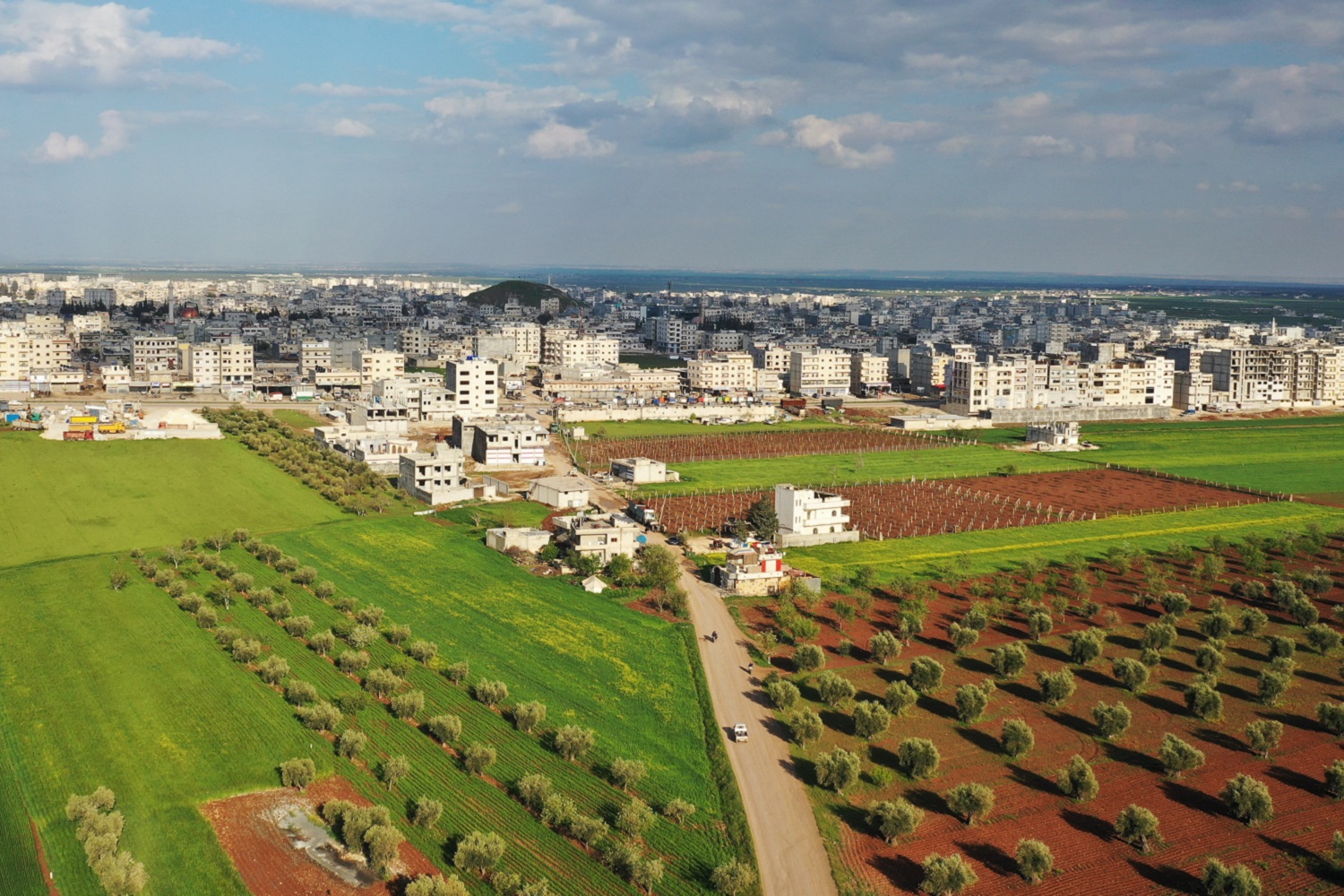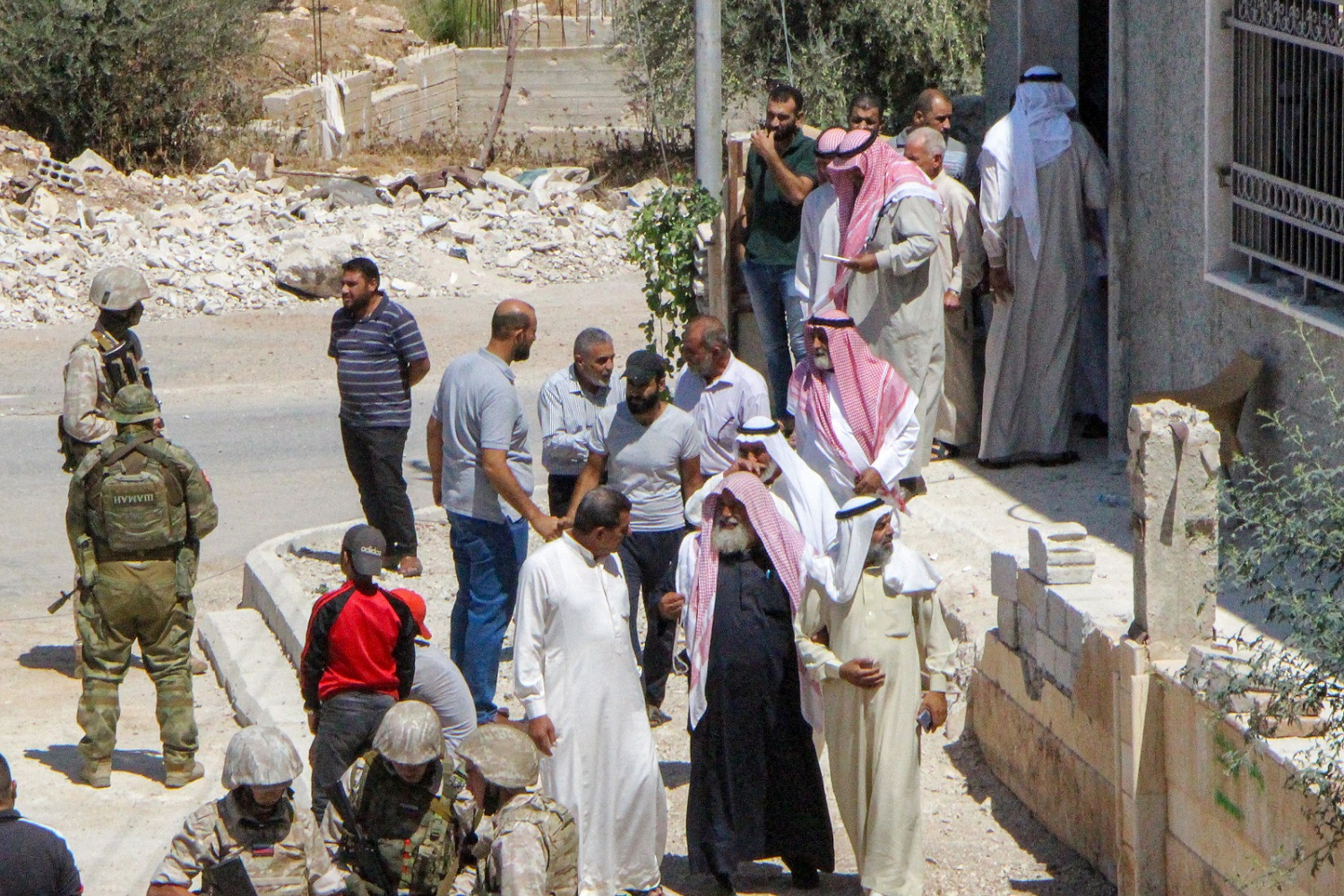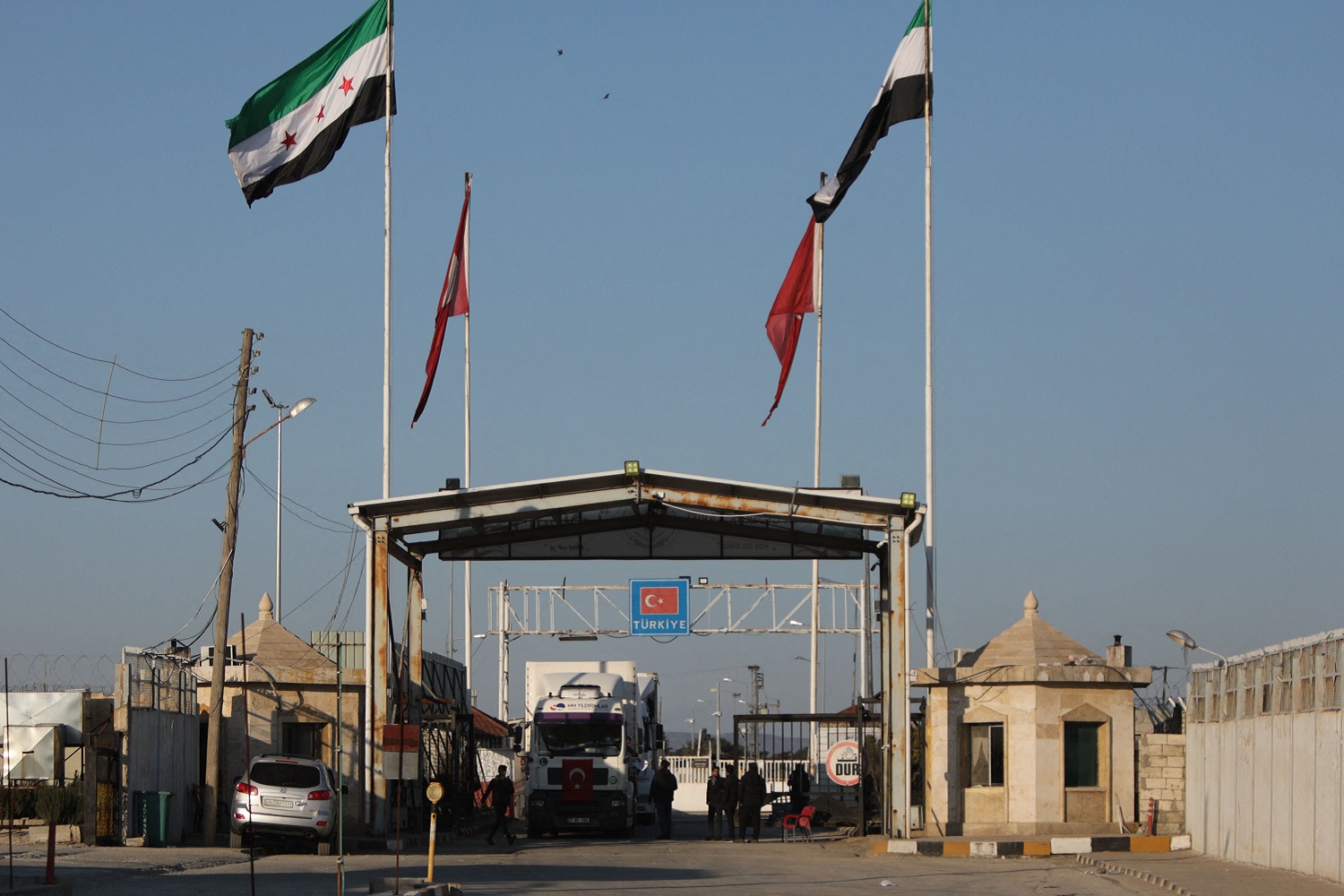Areefa Abdel Hamid al-Mousa discusses the impact of decades of authoritarian practices and of the conflict that rages since 2011 on Syrian identity(ies). It is based on research activity conducted in the spring of 2023 with 20 Syrian young displaced women in northwest Syria. The piece includes personal reflections where the author uses her own Syrian identity to explore the effects of the Syrian conflict on identities, and the potential of identities to promote peace. The author argues for protection of a Syrian identity that is inclusive of diversity – as opposed to the Assad or Islamist assimilationist projects – rather than for one Syrian identity that is intolerant of other forms of diversity.
The multifaceted decline of Syrian identities
The screams of the Syrian youth did not come from nowhere, but grew from the ever-present repression that accompanied the development of the modern Syrian state since the arrival of Hafez Assad in power in 1971. For more than half a decade, Syrians lived in a country with no symbol, no inspiration, and no leadership beyond the spreading shadow the Assad regime. Instead, the regime instrumentalized Syria to serve its project, curtailing the development of sources of knowledge and political thought in schools, curricula, and libraries. From ‘Assad Garden’ to ‘Assad Library’ and ‘Assad Festival’, Syrian celebrations and landmarks were associated with the ‘Assad brand’. Syria became Assad. Being a loyal member of the Baath party, and by extension, of the Assad regime, would guarantee a job, promotion opportunities and, ultimately a safe, trouble-free life. The official Syrian identity was also carried in the chants that accompanied childhood. When these songs endlessly promoted the ‘one Arab nation’, they also oppressed the identity of a third of Syrian people who belong to non-Arab ethnicities. The Kurds, Turkmen and Syriac, among others, were prevented from singing in their language, but also from using it in schools, workplace, and government departments. As the regime clearly defined the boundaries of the official Syrian identity, the social and cultural identity of the Syrians shrank.
As noted by Yasser,* the director of the cultural centre in the city of Idlib, the identity problem in Syria did not begin in 2011, but rather in the mid-eighties when the priority of the Syrian citizens became to buy bread instead of books, due to a period of economic insecurity. Yasser adds that an “undeclared war” between urban centres and rural peripheries saw the gradual replacement of cultural customs in the countryside with customs imported from the city: ‘this evolution is part of what some call civilization, development and fashion, but we managed to retain important rituals such as weddings, and religious and social holidays’. Syrian TV was only available in one single dialect and broadcasted series that offered a stereotyped image of the people living in countryside. A man from Adlibi would always be a policeman, and those from the eastern region of Badawi Sadih and Halabi would be unfailingly rich and love cooking and women. Popular costumes, dishes, stories, and cultural legacies were monopolized by Damascus and Aleppo, which bred a sense of inferiority in many rural residents who would pretend that they were from the city to obtain the privileged status of city dweller.
From this cauldron of repression and forced assimilation, Syrians raised their voices in the beginning of March 2011, and chanted: “The people want to bring down the regime”; the regime that reduced us to one of its projects, killed our multiple identities and dyed us with one colour, and erased our knowledge of ourselves and our history. The chants of the peaceful civil protests began with dreams to restore Syrians’ leadership and diversity. In 2011, Syrians chanted “one, one, one, the Syrian people are one”. But the regime met these chants with sectarianism and heavy weapons and its media machine began painting the demonstrations with the brush of darkness and radical religiosity. As the protests turned into a wide-spread armed conflict, the priorities of Syrians changed as well. To escape death at the hands of multiplying armed groups, Syrians left their homes, or in contrast, reduced their everyday movements. In addition to this, the emergence of a radical religious current embodied by several groups such as Daesh or Jabhat al-Nusra began further tampering with the Syrian cultural and social heritage. They imposed their rule and ideas by force of arms, arrests and forced disappearances. This environment has become the reality of Syrians for over a decade now.
This emptiness created by the conflict had a great impact on the identity of Syrian youth, whose early years are crucial in the development of identity and self-awareness. The conflict also left its negative mark on the socio-economic face of the country; it created poverty, homelessness, ethnic and religious tension, and other social problems. The so-called peace agreements failed to restore any kind of peace but rather, were deals between the Syrian regime and opposition groups. Nowadays, Syrian only come to wear their traditional clothes in relation to the conflict, often to honour the dead. Weddings are not celebrated anymore and are limited to small sessions without rituals. In their new reality, Syrians keep a low profile and make every effort to go unnoticed and not stir up controversy; this includes silencing their customs and traditions. According to Muhammad, a researcher and activist, another element that progressively weakened traditional, local identity in Syria is the new cultural cosmopolitan horizon brought about by social media: ‘with social media, new songs and customs that do not belong to our society entered every Syrian house and affected young people. Weddings are celebrated on the fast rhythm of this new music that are suitable for dancing and replaced traditional songs and social customs’.
Saleh, a school teacher in displaced persons camps near Bab al-Salamah on the Syrian-Turkish border, witnesses the memory loss experienced by Syrian children every day. He reflects: ‘I asked a middle school student where she was originally from, and she answered “al-Haramain camp”. Of course, this little girl’s history predates her life in the camp but she cannot bring up any other memories than escaping bombings, living in a tent, and moving from one camp to the other’. Indeed, the child does not know that she is from Tel Rifaat, the ancient city that was the capital of the Aramaean state in the 9th century BCE, and one of the largest tell in the Mount Simeon region. She was only two years old when the conflict began. Now that she is in her teens, all she can remember is the war.
The importance of identity in a country at war
In preparation for this blog, I gathered 20 displaced young women living in Idlib governorate in northwest Syria. Together, they represented all the 14 Syrian governorates. Discussions lasted for a couple of days and focused on their personal identity. As we started discussing, two trends emerged. First, the participants only remembered the name of their region of origin because they heard it from their family members but this is all they know of their life before the conflict. Growing in the chaos of war and political division prevented them from building an inclusive national memory. Second, for these young women, the concept of homeland is very narrow, limited to the boundaries of their cities. They expressed a sense of being lost in a country they do not know. Not only this, but they stand in front of a blocked horizon, that is, a lack of socio-political opportunities, making them incapable of playing any active role at the national level. The lack of a past and the absence of a future make them stuck in the present, unable to recover any sense of citizenship and belonging in a fragmented society.
Quickly, the discussion developed on the need to strengthening ties with ‘close members’ such as neighbours or people sharing the same religion. Participants also insisted on the need to find ways to foster dialogue – through inclusive sessions for instance – between the displaced and residents to enhance social peace and a common identity. We came to the conclusion that identity is the result of belonging, and that only when one understands what it means to belong, once can make a series of decisions and realisations: Why do I exist? For which purpose? For these young Syrian women, it seems that the search for personal identity is the search for the collective unity of belonging: ‘By being socially cohesive, we can achieve loyalty and strengthen our affiliation to each other, which will be reflected in our personal pride in our identity’. Participants unanimously agreed that the main components of identity are language or dialect, ideas, culture, lifestyle, and a number of psychological, emotional, mental and behavioural characteristics that define the individual’s uniqueness and distinguish her/him from others. These characteristics, they argued, remain mostly unchanged despite all the developments that can occur in life.
During one of the activities, I asked young women to describe the governorate of their choice, making sure that each of the 14 Syrian governorates will be described by at least one participant. We quickly realised that each governorate was unique thank to their most important landmarks, rituals and customs, dialect and influential figures. For instance, the words ‘shuf’, ‘dahaj’, ‘3ein’ and ‘tala3’ are used across Syria and all mean ‘look’; while ‘shu’, ‘ashu’, ‘shakun’, and ‘ash tebboune’ all mean ‘what you want’. Eventually, we understood that the one thing that unites us is that we are young Syrian women, and do identify as belonging to Syria. More than this, the presence of people from all over the country in one small geographical area – caused by forced displacement – allowed people to mix and learn from each other and create a new Syrian identity. We drew the contours of the terms ‘citizenship’ which includes both a common inclusive identity and the specific identity of each region and individual. We concluded that the one who does not have an identity does not belong and, therefore, does not exist.
How will identity build peace in Syria?
Over the past years, the conflict annihilated both common and specific identity traits across Syria. The war killed the role of the family and challenged the role of adults in securing daily subsistence and other basic necessities, which led to the decline of socio-economic identity for many Syrians across generations. The war also killed the stories of grandmothers, and the legacy of ancestors. Instead, displacement stories have become the companion of every evening. Chants and songs that glorify the regime or the opposition have become a substitute for folk chants. Even traditional love songs such as “Skaba Ya Dmouh El Ein” (Tears of the eyes, pour down profusely) have turned into a chant for martyrs. Therefore, Syrians must protect their identities – ethnic, socio-economic, regional, national, civic – rather than for one Syrian identity that is intolerant of other forms of diversity. This can only be done by reviewing educational institutions and their cultural impact on children, and by increasing parental role in supporting children’s identities.
The question of which dominant identity will prevail after the conflict remains, especially for displaced communities. As displaced persons, we try to think as the host community would think, with the aim to integrate our new environment. But how we will re-integrate our community when we return? Will the young female participants return with an identity that was imposed on them in Idlib, Raqqa, or Aleppo? Or will they return with their own, unique identity that they developed during their displacement? Will this help them become more tolerant towards others? In other words, displaced Syrians not only face the question ‘will I return?’ but also the questions: ‘what will I return to?’ and ‘as whom will I return?’.
To conclude, preserving and developing Syrian identity(ies) is an important and urgent matter and the responsibility of the entire society, starting from the individual, moving to the family and community and ending with governmental and non-governmental institutions, including media that can raise cultural awareness and promote tolerance and peaceful coexistence. Most importantly, this network of actors must encourage interactions between individuals and groups that have been divided by over a decade of conflict. Only such bridges can repair the Syrian society, promote cooperation and mutual understanding, and overcome differences.



